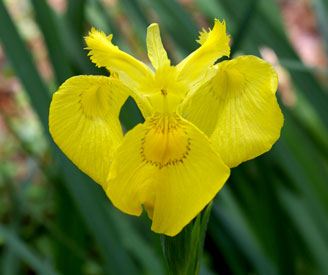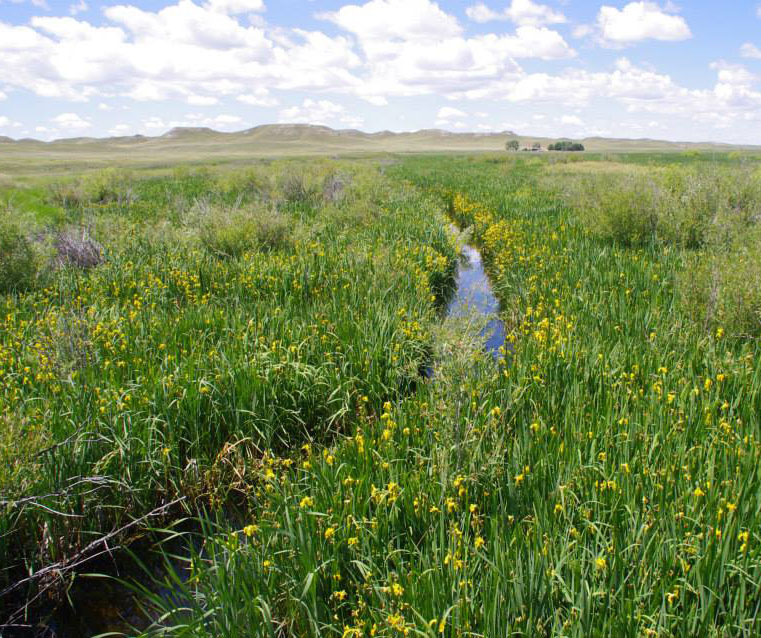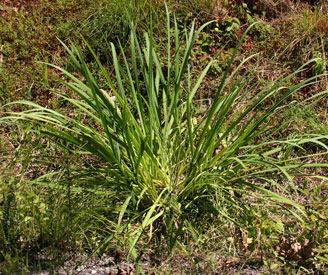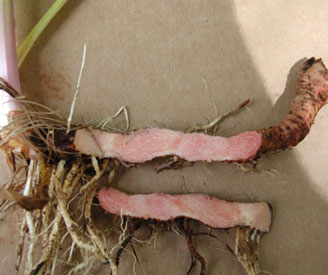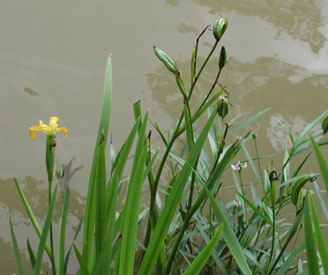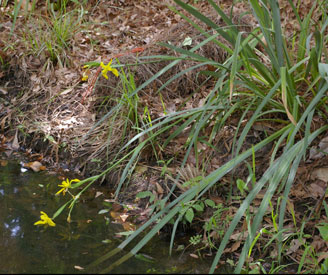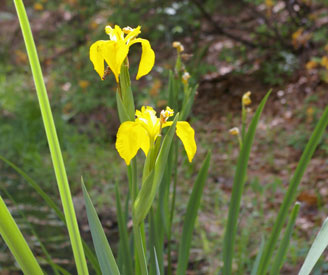Yellow Flag Iris
Iris pseudacorus
Description
Perennial iris grows from a rhizome. Roots are 4-8 inches long. Each plant produces 10 leaves covered with a fine waxy powder which gives the leaves a bluish look. Plants are hairless and form clones when rhizomes are separated. Yellow flag iris flower from late May to early July and fruits from August to October
The sword-shaped leaves have a raised midrib and are about 0.4 to 1.2 inches wide. Leaves range from 20 to 40 inches in length, or about as long as the flowering stem. Flowers form on a leafless stalk that is round in cross-section and is often branched. Beneath each flower is a large solitary bract, with thin, dry, margins that lack green color. Flower pedicels are about 1.5 – 3 inches long, about the length of the ovary. Flowers are 3-4 inches in diameter, and vary in color from pale yellow to nearly orange. Download fact sheet.
Habitat
Forms dense stands in shallow water and wet places along rivers, lakes, ponds and in wetlands.
Location in Nebraska
Large, dense colonies in the Niobrara River channel in Sioux County. Recent removal and control efforts have treated parts of this infestation.
Pathway of Introduction and Spread
Introduced as an ornamental and is native to Europe, western Asia and northern Africa. Has been used in water treatment to remove heavy metals out of water. Grows from both rhizomes and seeds which travel through water systems spreading the infestation.
Impacts
Forms dense monoculture stands over very large areas, crowding out other species, restricting water movement. The plant is toxic to animals and fish. Cattle have been shown to be effective to control the plant in early growth stage with no noticeable effects to the cattle.
Nancy Loewenstein, Auburn University, Bugwood.org
Leslie J. Mehrhoff, University of Connecticut, Bugwood.org
National Park Service
